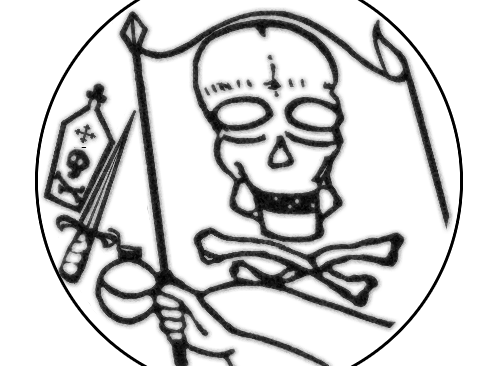By Anastasia Aleiferi,
Throughout human history we have witnessed empires rise and fall, humans oppressed and conspiring against others. After the French Revolution, in Europe, we have witnessed many revolutionary and liberating movements happening, especially in the Balkan region. In Greece, we had the Greek Revolution, which was a success that started with Filiki Etairia. A similar movement that started from a secret society that tried to create an empire existed for the Serbians but didn’t have the same results. That group that had the idea of the Panserbic revolution and empire was the “Black Hand”.
The Black Hand, officially known as Unification or Death, was a military secret society formed in 1901 by officers of the Army of Serbia. This secret Serbian society used terrorist methods to promote the liberation of Serbians. This conspiracy group acted against the dynasty. The group was founded in 1901 by a group of lower military officials and had as its leader captain Dragutin Dimitrijević. During the first meeting of the group, in 1901, it was decided that they would assassinate the Serbian royal couple, King Alexander Obrenović and Queen Draga. The Black Hand wanted the murder of the royal couple because they demanded the liberation of their Serbian brothers and sisters from other dynasties, especially from the Austro-Hungarian dynasty. They performed their plan on May 28 to 29, 1903, in which the leader of the group led a small group to the palace and assassinated the royal couple in the Old Palace in Belgrade. The plan and its execution were a part of the coup d’état that the conspiracy group tried to accomplish. This coup d’état is also known as the Coup of May, which ended the dynasty of the Obrenović line because of the murder of the royal couple and ascension to the throne of King Peter I of the Karađorđević dynasty.

Along with the death of the royal couple, the same night the Prime Minister, the Minister of Defense, and the General Adjutant were murdered by the Black Hand. In addition, the group gained a lot of popularity after its alleged involvement with the assassination of the Austrian Archduke, Franz Ferdinand, which was the pretext for the start of World War I. Later on, members of the Black Hand created other conspiracy and revolutionary groups, in order to fight against the Austro-Hungarian occupation in Bosnia. The new group, which mostly operated during the Balkan Wars and in Bosnia-Herzegovina and Istria (a part of Croatia), was called “National Defense”, and had as its purpose the unification of all Serbians, under one rule. This group, which operated under the orders of the Black Hand, sent a lot of anti-Austrian spies, and anti-Austrian propaganda and organized and prepared attacks in occupied territories, in order to liberate them.

The Black Hand, as a proper conspiracy and militaristic group, had its own constitution and rules that all members should follow as well as its own magazine (1913), in order to disseminate their ideas. By 1914, a large part of the officials of the Serbian Army supported the Black Hand or were involved in it. The Crown Prince Alexander of Yugoslavia was a big financial supporter of the Black Hand and National Defense. The group held a lot of influence over the consistency of the government and its policies. In short, the Black Hand was operating in a semi-accepted state and the Government didn’t persecute the group.
Eventually, the Serbian Government couldn’t allow the Black Hand to continue its operations and decided to shut it down. In 1916, the Serbian Prime Minister outlawed the group and by the start of 1917, it had arrested its leader and other key members. In 1917, a sham military trial was held for the arrested individuals, for conspiracy against the royal family, illegal military actions, and the attempted murder of Prince Regent Alexander. It was later confirmed that the numerous accusations were perjuries and most of the evidence was fabricated. The leader and six other people were sentenced to death. The leader and three of his most trusted officials were executed by a firing squad in June 1917. After the death of its leader, many members tried to instigate the group’s insurrection. Trustworthy and loyal members of the National Defense created the “White Hand” to continue the work of the Black Hand, using the same methods. It is believed that the death of Vojislav Petrovic, an ex-attaché to the Yugoslav Legation in London, who was writing a book about the Black Hand and the assassinations and paramilitary actions that it took, was the work of the White Hand. The White Hand was accepted in Yugoslavia and was operating under the guise of the state.
The last known action of the Black Hand was in 1938, when members of the Black Hand and of the Serbian Cultural Club founded and participated in another conspiracy group, in order to overthrow the Yugoslav regency. This new group was created and operated by some old members of the Black Hand and mimicked its ways of operation.
References
- June 28, 1914. The National WWI Museum and Memorial. Available here
- Black Hand. Britannica. Available here
- The Black Hand. WWI. Available here
- The Black Hand and Their Part in The Assassination of Archduke Franz Ferdinand. History Just Got Interesting. Available here
- The Black Hand: Serbian Terrorists Spark WWI. Thought.Co. Available here
- JOACHIM REMAK. Sarajevo: The Story of a Political Murder. Criterion Books. New York. 1959.
- JOACHIM REMAK. The Origins of World War I, 1871-1914. Peter Smith Pub. New York. 1967.




